Uruguay have been drawn into Group H for the 2022 World Cup in Qatar. Making up Group H are Ghana, Portugal and South Korea. Portugal are the highest-ranked team in the group, according to FIFA’s men’s rankings, being placed 9th. Uruguay themselves are 14th, South Korea 28th and Ghana 61st. The group stage will by no means be a ‘walk in the park’ for Uruguay who will have to be at the top of their game to progress.
Having qualified for another World Cup, Uruguay will be looking to better their quarter-final run at the 2018 World Cup. Uruguay have a rich history with the World Cup and international football in general. They have the joint-most Copa América titles with 15 — their most recent success coming in 2011. Furthermore, Uruguay have four FIFA World Championships which include two World Cup victories and two gold medals at the Olympic football tournament.
The Uruguay squad contains a lot of talent and is seeded with a wealth of experience. Captain and record appearance holder Diego Godín with likely play in the heart of the defence. Top scorer and former Barcelona frontman, Luis Suárez will lead the line and Edinson Cavani will play a role from the substitute bench. All players are well into their thirties and it is likely to be their last tournament representing their country. The truly mesmerising ability of all three players still shines through and will be something that head coach Diego Alonso hopes will take Uruguay to the latter stages of the tournament. Young exciting players such as Real Madrid‘s Frederico Valverde and Liverpool‘s new attacker should provide good quality in key areas of the pitch.
Uruguay qualified automatically after finishing 3rd in the group behind Brazil and Argentina. Their qualification was only secured by just two points and had no easy journey throughout the process. Uruguay lost all four games where they faced Argentina or Brazil, perhaps this shows their lack of ability against tough opposition.
Alonso was appointed head coach at the end of 2021 replacing Óscar Tabárez who had been in charge for 15 years. The change in coach saw Uruguay win their first four games under Alonso which secured their qualification for the World Cup. It will be interesting to see how they perform in a few weeks.
This tactical analysis will cover the tactics that Alonso has implemented in his Uruguay side ahead of the World Cup. This analysis will cover how Wales set up in possession, and out of possession and a little bit of information about the squad,
Predicted starting XI
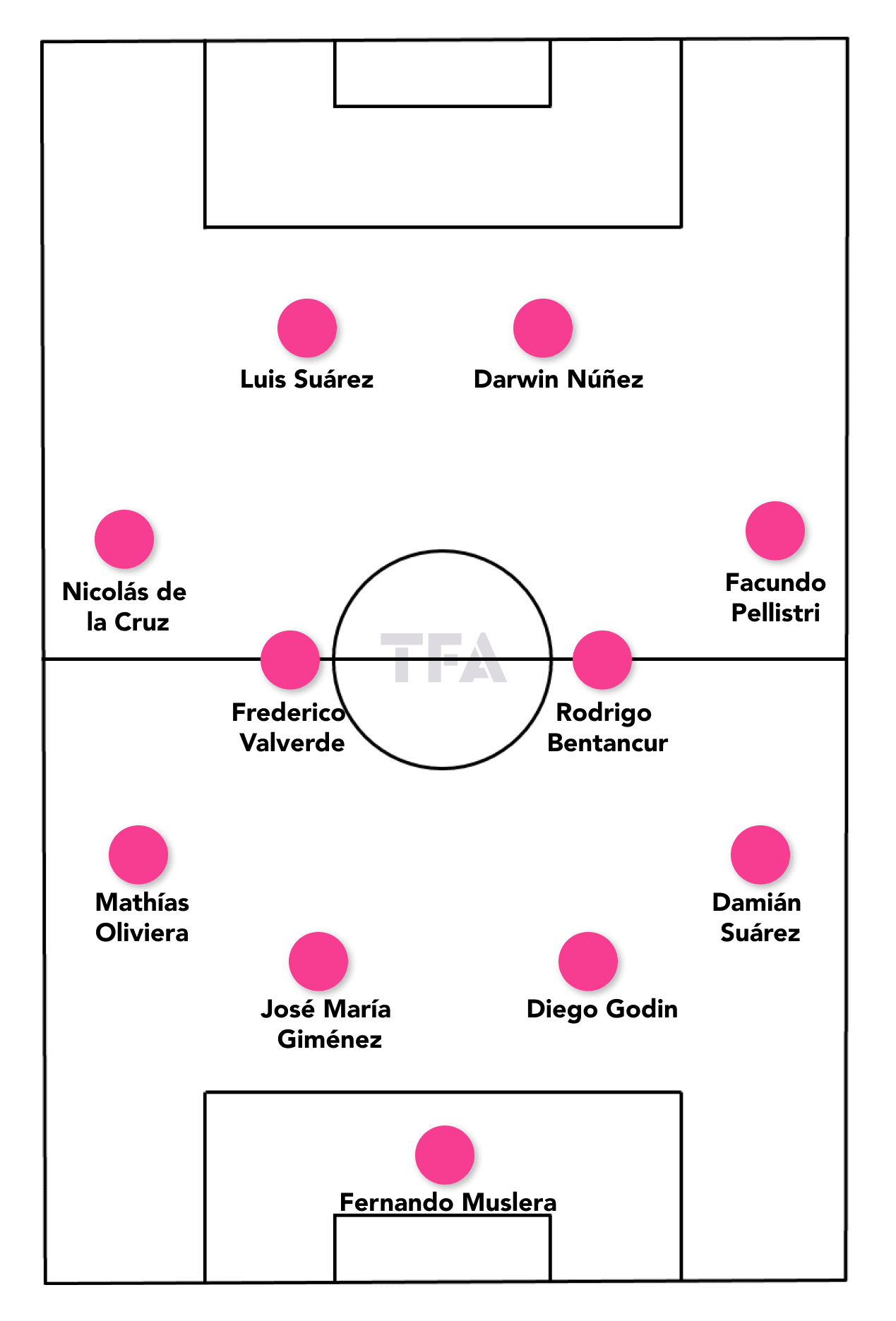
Diego Alonso has tried and tested many different formations during his time in charge. He has played a 4-3-3 on plenty of occasions however, I feel that a 4-4-2 is more suited to Uruguay’s group of players and play style. The 4-4-2 formation has a heavy emphasis on the involvement of the strikers, an area in which Uruguay are blessed, with Suárez, Cavani and Núñez.
Fernando Muslera has been the first-choice keeper for over a decade and is expected to retain that position for the World Cup. Having suffered a nasty injury at the end of 2021, the goalkeeper is back fit and playing for Galatasaray. At 36, he is experienced and like other players in the squad, is probably going to be appearing at his last international tournament.
The backline will likely consist of a lot of experience. Damián Suárez will line up at right-back and provide excellent defensive quality. The injury that Ronald Araújo sustained in September will keep him out of action, the Barcelona man has featured as right back and centreback for the national team. Due to this, the centreback paring is expected to be made up of Diego Godín and José María Giménez. The pair played together regularly for Atlético Madrid and have a good understanding of each other. There is a lack of pace in this area which is something that could cause problems. The left-back is a highly contested spot with Mathías Oliviera and Matías Viña both being capable. Oliviera has played more regularly recently so I expect him to get the nod.
The midfield area is filled with some hard-working quality midfield players. The central area is likely to be covered by Rodrigo Bentancur and Real Madrid’s Federico Valverde. Both players complement each other well and provide energy which allows Uruguay to play so aggressively.
The wide areas are a position that seems to change quite regularly. On the left, I have gone with Nicolás de la Cruz as he loves to drift into central areas which allows Núñez to drift wide into the space. On the right, I have predicted Facundo Pellistri who always seems to perform well for his country. He has not had regular game time this season which might hinder his chances and Alonso may choose Agustín Canobbio.
Onto the front line where it is expected to be made up of national heroes of the past and the future with Suárez and Núñez the likely partnership. The dynamic of the team flows well with Suárez naturally dropping deeper to receive the ball, allowing Núñez to play on the last line of defence. Reinforcements in the attack will be the likes of Edinson Cavani, Agustín Álvarez and Diego Rossi. All three provide good attacking backup which Alonso can rely on.
When looking at the age of the squad, it is apparent that it is ageing, in football-related terms. Eight players are over the age of 30, five of which could potentially start. This is definitely something to be aware of as recovery may take longer for these players and in tournament football, where games come quick and fast, it is key that players remain fully fit.
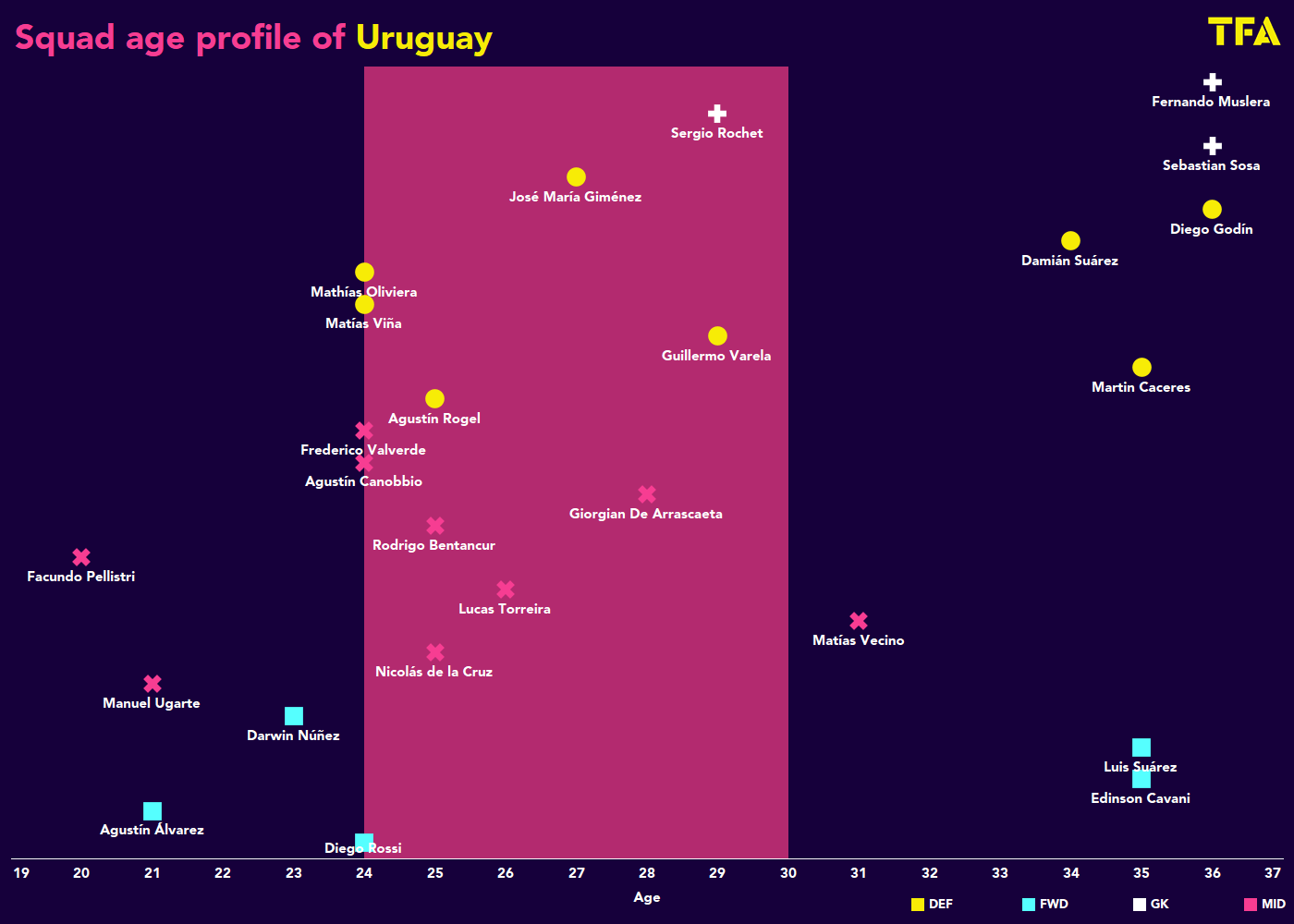
Furthermore, there is a strong core of players in the peak-age category, the pink area. This area makes up the large majority of the squad and also the starting 11. For Uruguay, these players must be utilised well and given opportunities.
Attacking phase
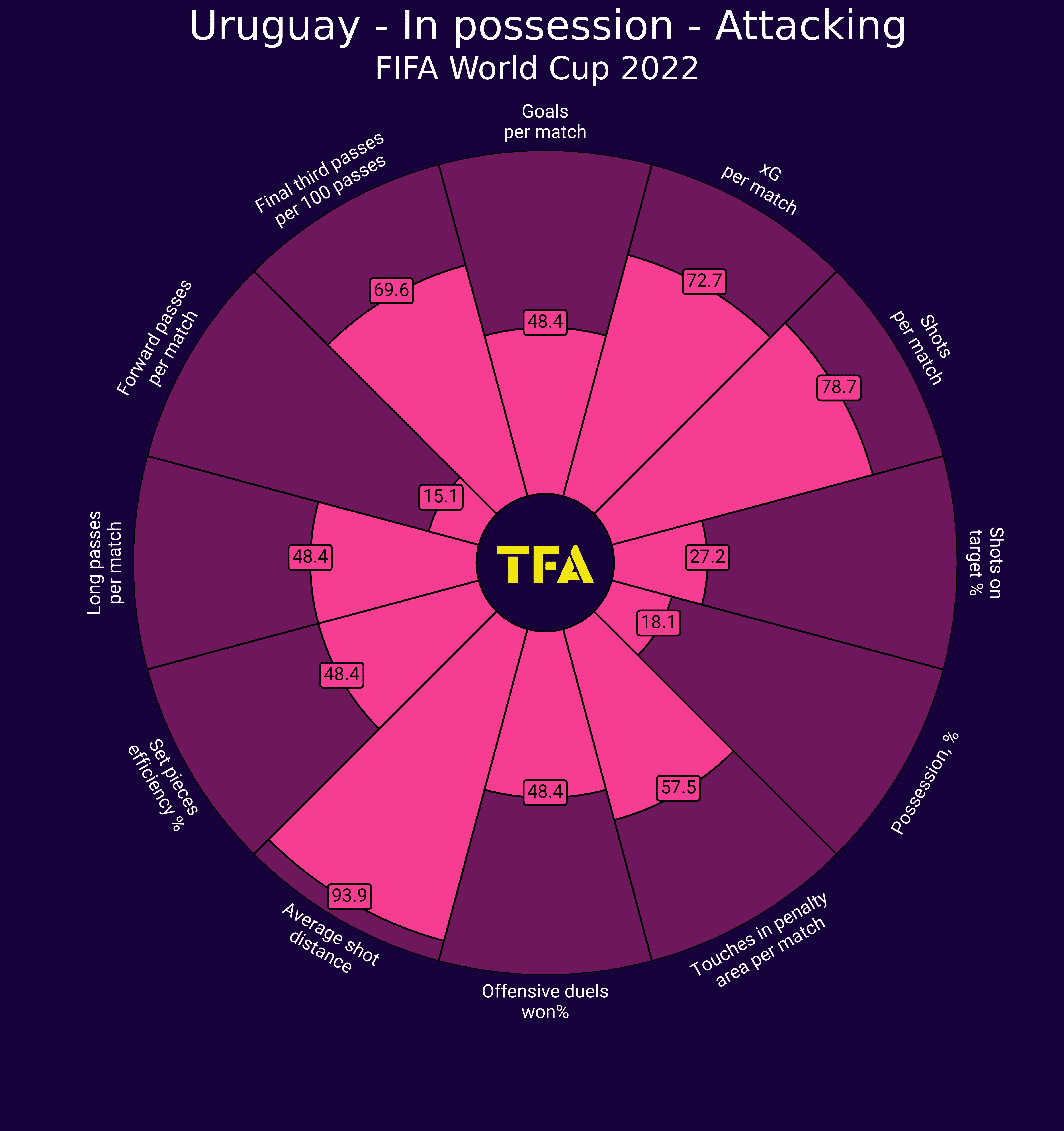
The data for Uruguay’s attacking data shows how well-rounded they are in their attack. The good ranking for final third passes per 100 passes emphasises how they like to play high up the pitch and in the opponent’s half.
Furthermore, their low rank for forward passes per match can be easily explained. When attacking Uruguay like to dribble with the ball, progressing play that way. Other teams may make two or three passes where Uruguay look to dribble the ball into space.
When building up and attacking, Uruguay are excellent at ensuring their defensive players have multiple options to pass the ball to. Playing in a 4-4-2 formation can, at times, make build-up difficult. Uruguay use their space well and instruct players to play on different lines and angles. This makes it easier for the man on the ball to find a pass. The example below shows how there are four available passes.
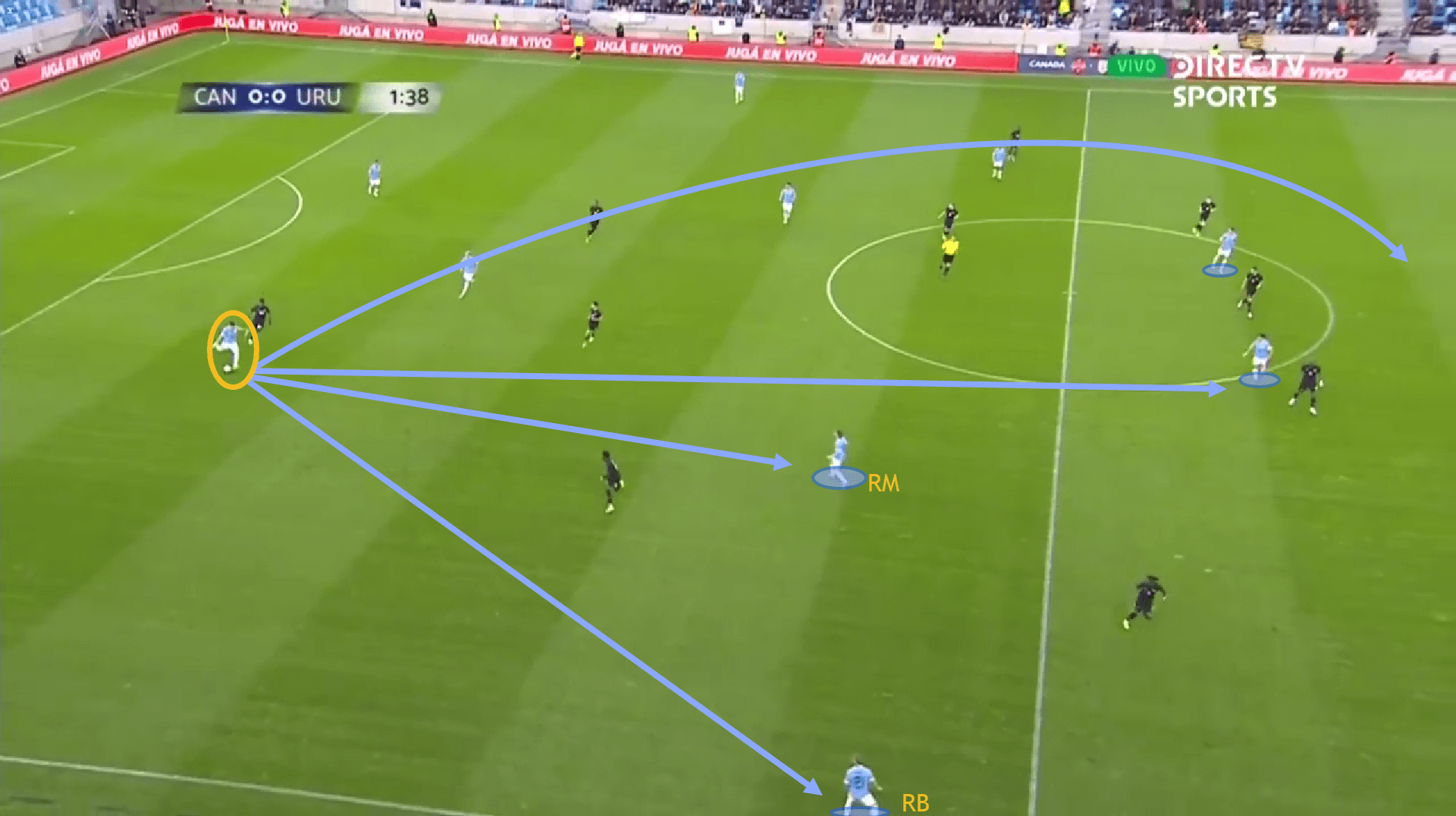
To do this, good understanding and awareness from all players around the ball are needed. The example above shows how the right midfield player and right back are in completely different positions from each other and not interfering. To make their options even better the strikers play in a rotation style. One striker drops into the space, usually Suárez, and the other striker makes a run into the space.
The way in which Uruguay’s wide midfield players set up is interesting. The style encourages them to play centrally when play is being built up which in turn encourages the full-backs high and wide, providing width. By doing this Uruguay can get their wide players on the ball in more central areas, where dribbling directly is more dangerous but perhaps less successful.
Furthermore, when Uruguay are looking to sustain possession in the middle of the pitch they create a diamond with their two centrebacks and two central midfield players. Doing this gives them a solid base to build upon and creates several passing angles.
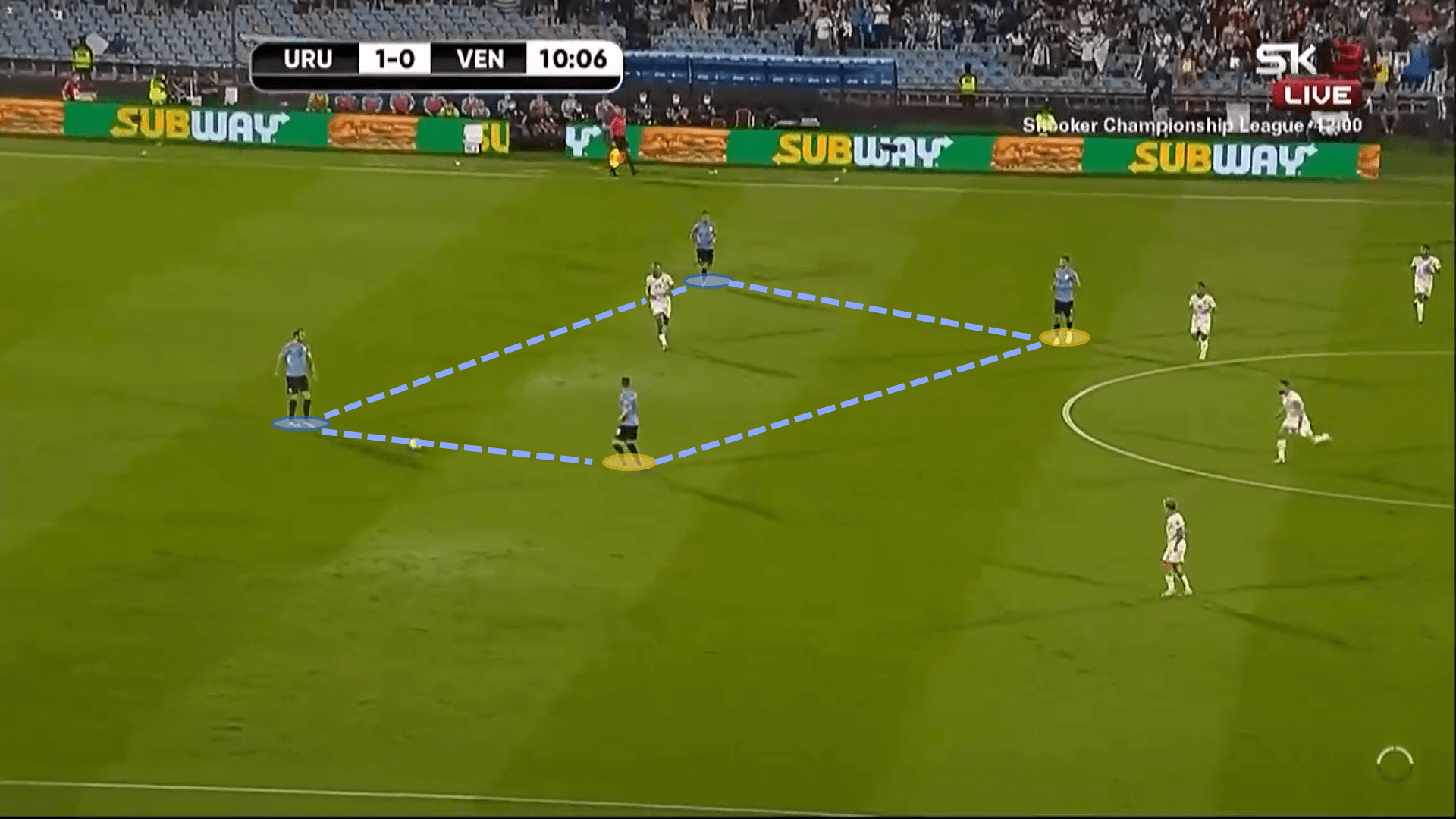
This shape creates a central overload and allows Uruguay to keep possession easily. Their central dominance means that they can progress play at their own discretion into wide channels or into their strikers. By operating in this way, Uruguay can keep possession and avoid the opposition’s press.
Moving up the pitch, Uruguay like to use the width created by their full-backs. As mentioned above, wide midfield players are prone to playing more centrally. This tactic is used continuously throughout the attacking phase and the full-backs of Uruguay are often called into regular attacking action.
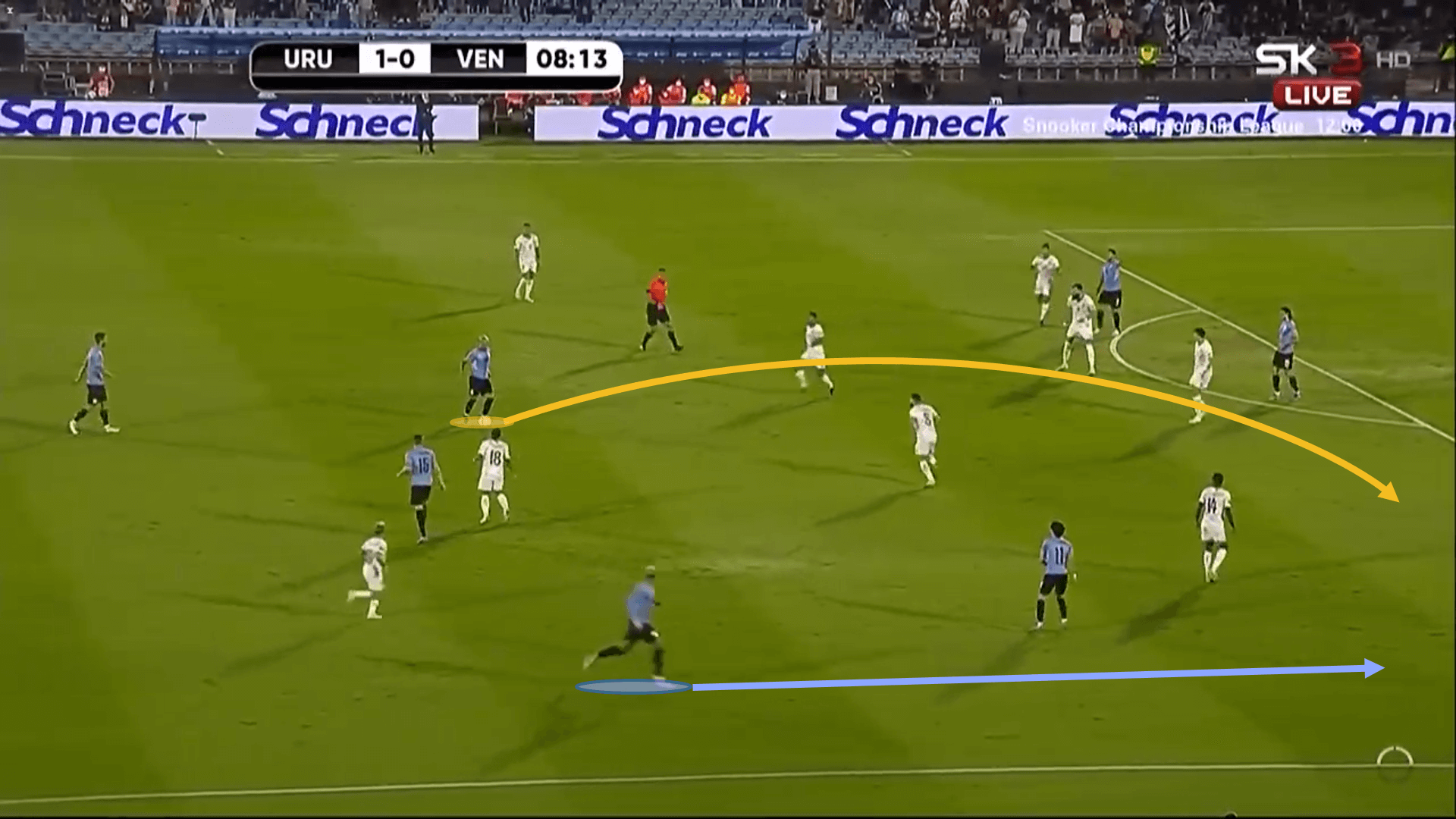
The above image shows the full-back making a run into the space which has been created by the wide player positioning himself more centrally. The run is perfectly found by the man on the ball, this then leads to Uruguay attacking the box where they look to get numbers quickly into the penalty area.
Uruguay can get the ball into dangerous positions via the method seen above, or through more direct and aggressive attacking play. This involves the wide players being positive and dribbling with the ball at their feet. When looking to attack the box, the wide midfield players often pick the ball up in more central areas due to their positioning. This aids them massively as they can drive into the box and at the opposition’s defence.
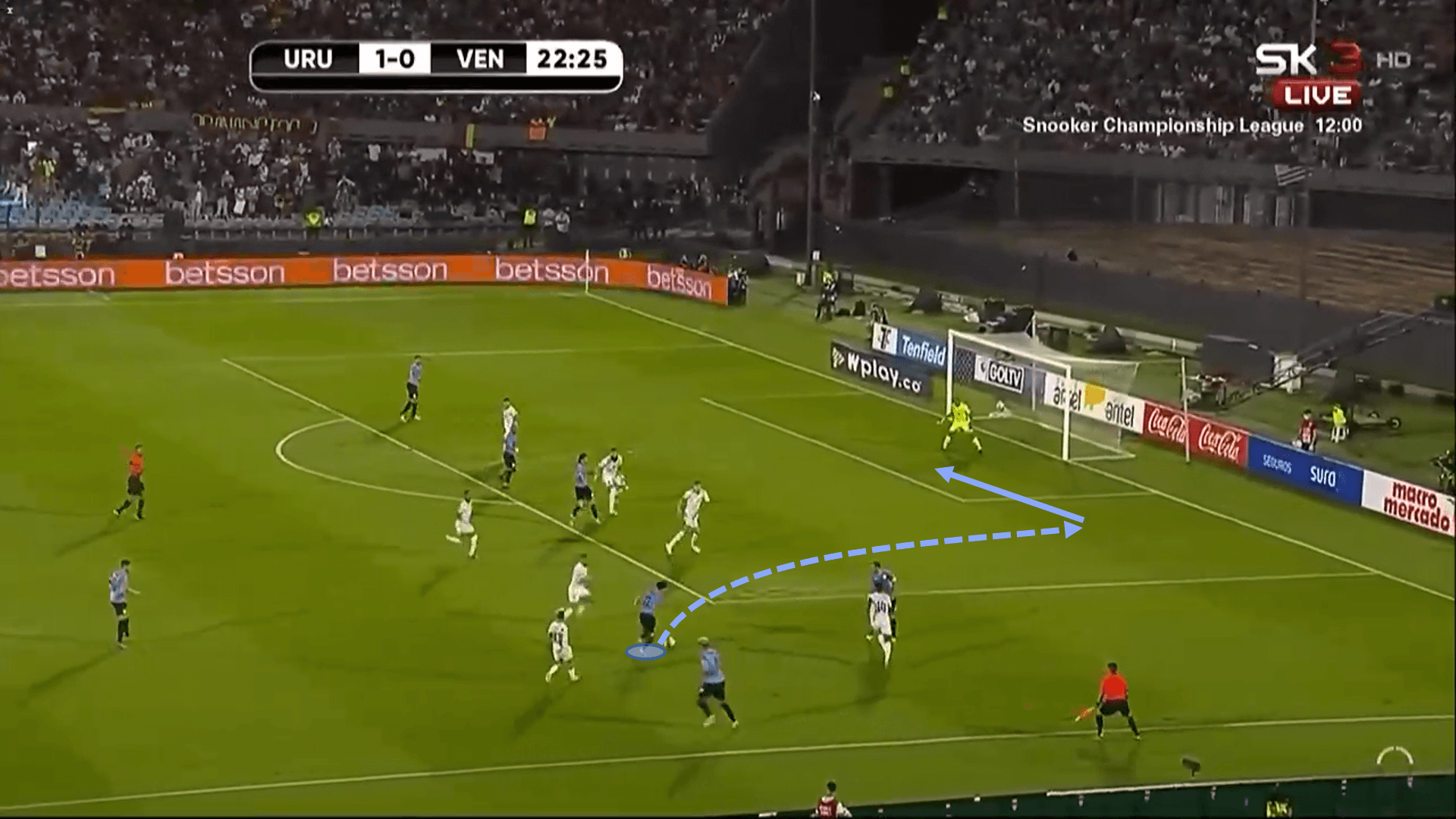
The above example shows how wide player, Pellistri, picks the ball up in a more central area than a traditional winger would and, due to his positioning, is able to exploit the space in the box before playing a drilled pass into the six-yard box. The Uruguayan attacking players look to offer support with both strikers always being alert in the penalty area as well as the opposite wide player.
Defensive phase
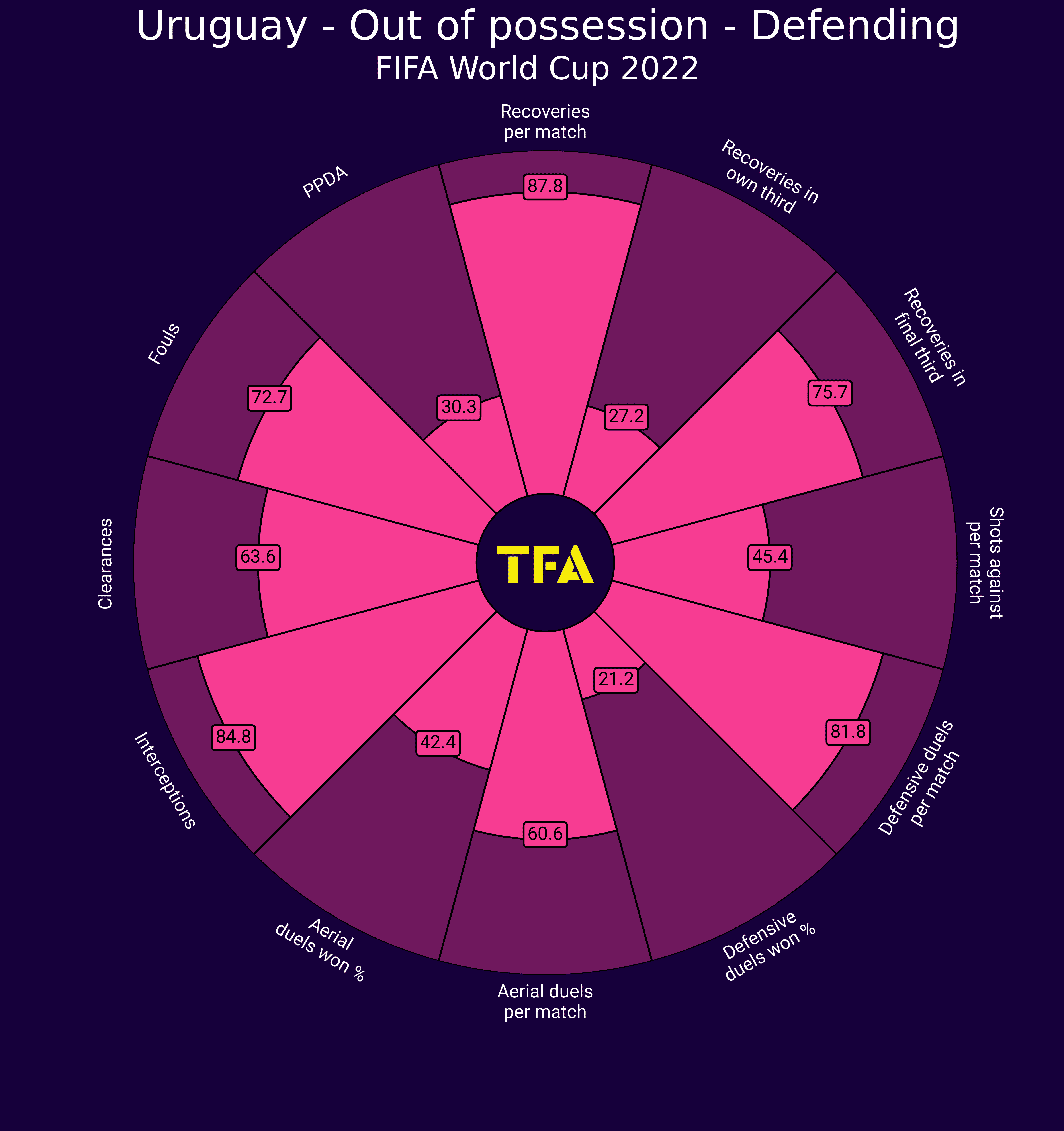
The defensive data above is very telling about Uruguay without possession. Their high rank for interceptions shows how well they set up out of possession and how structured they are. Uruguay like to remain solid in the middle part of the pitch making it easy to intercept passes that are tried to be played through the lines.
Furthermore, Uruguay have a percentile rank of 75.7 for recoveries in the final third. Without the ball, Uruguay look to press their opponents when the opportunity is right. They are calculated and choose their moments to press. When they do press it is well structured making it difficult to play through, their high success is backed by the recoveries in the final third. To back this up further, a PPDA ranking of 30.3 means that Uruguay have a low score for PPDA which means they look to engage with their opponents quickly.
The image below shows the press that Uruguay implement. The nearby players are alert to anticipate a pass into the central player. They are quick to react and apply pressure on their opponent.
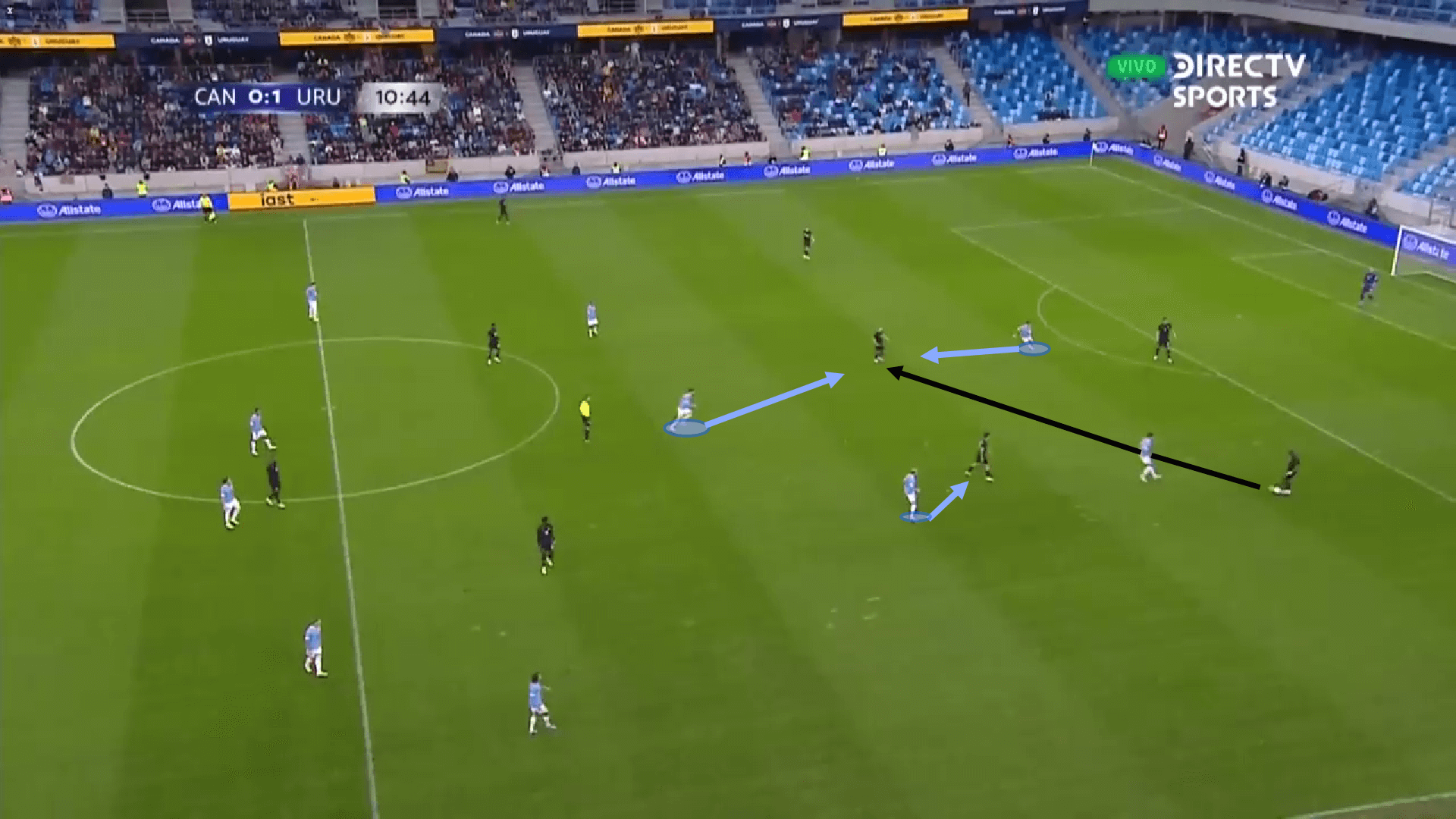
Two players are looking to directly apply pressure to the man receiving the ball with one man applying pressure to the next potential pass. This aggressive press wins possession back high up the pitch and a goalscoring opportunity is created from this turnover.
Once play has progressed deeper into their half, Uruguay look to get set into a solid defensive shape. In recent times, Uruguay have dropped back into a 5-3-2 formation. They have done this when Agustín Canobbio has played on the right of the midfield.
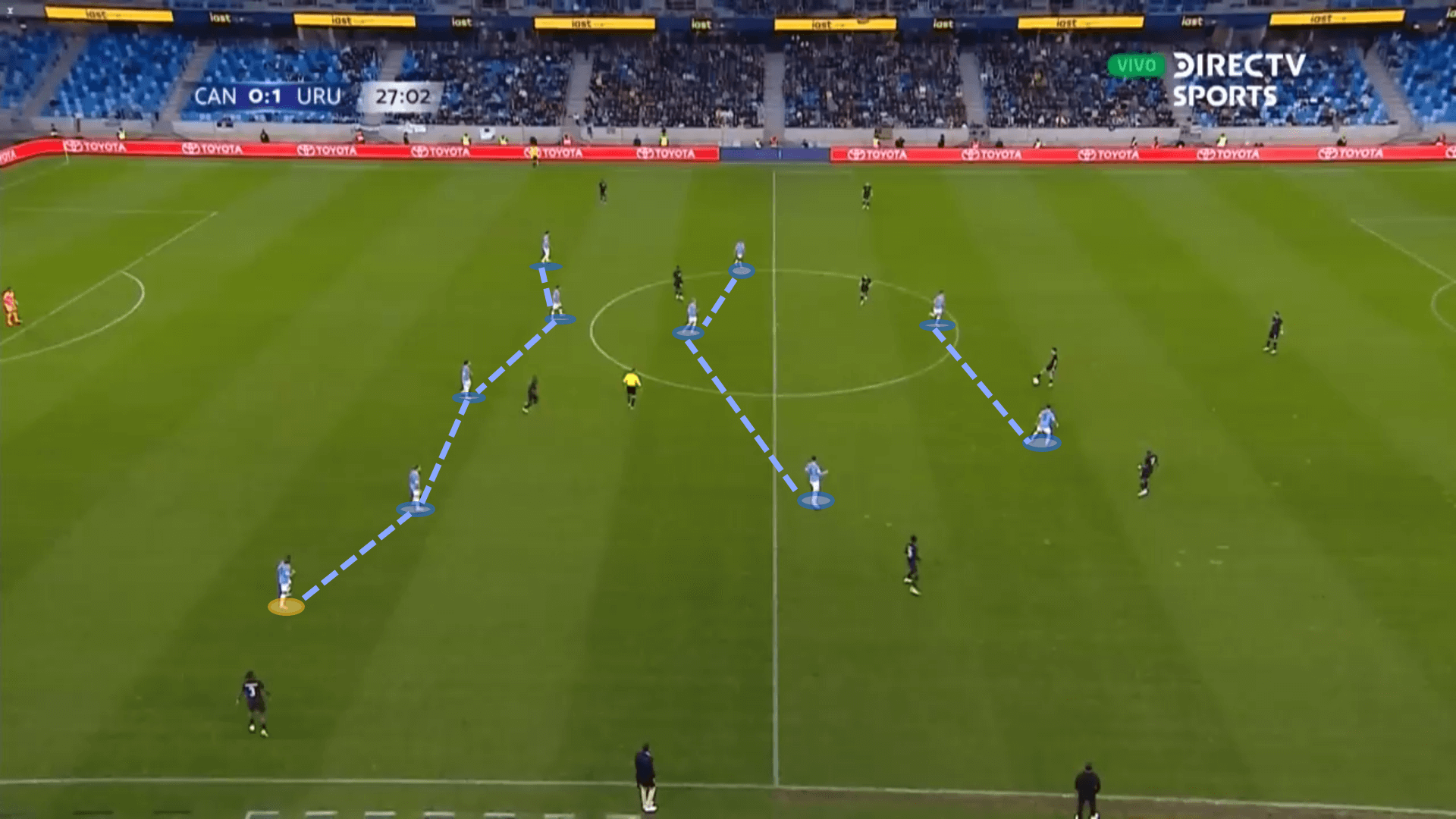
Highlighted in yellow, Canobbio drops deep to create a flat back five. Nicolás de la Cruz, playing wide left, tucks inside to create a narrow midfield three. This formation allows Uruguay to be more defensively solid in the back line. The narrow midfield stops the play through the central areas. This formation is utilised very well and makes it as difficult as possible for the opposition to break down.
Further down the pitch and defending deeper, Uruguay remain compact, making the pitch tight and congested in the middle of the pitch. Doing this stops the opposition from attacking centrally and getting shots off at goal. Working hard out of possession leads to Uruguay keeping short distances between each other as they shuffle across from side to side.
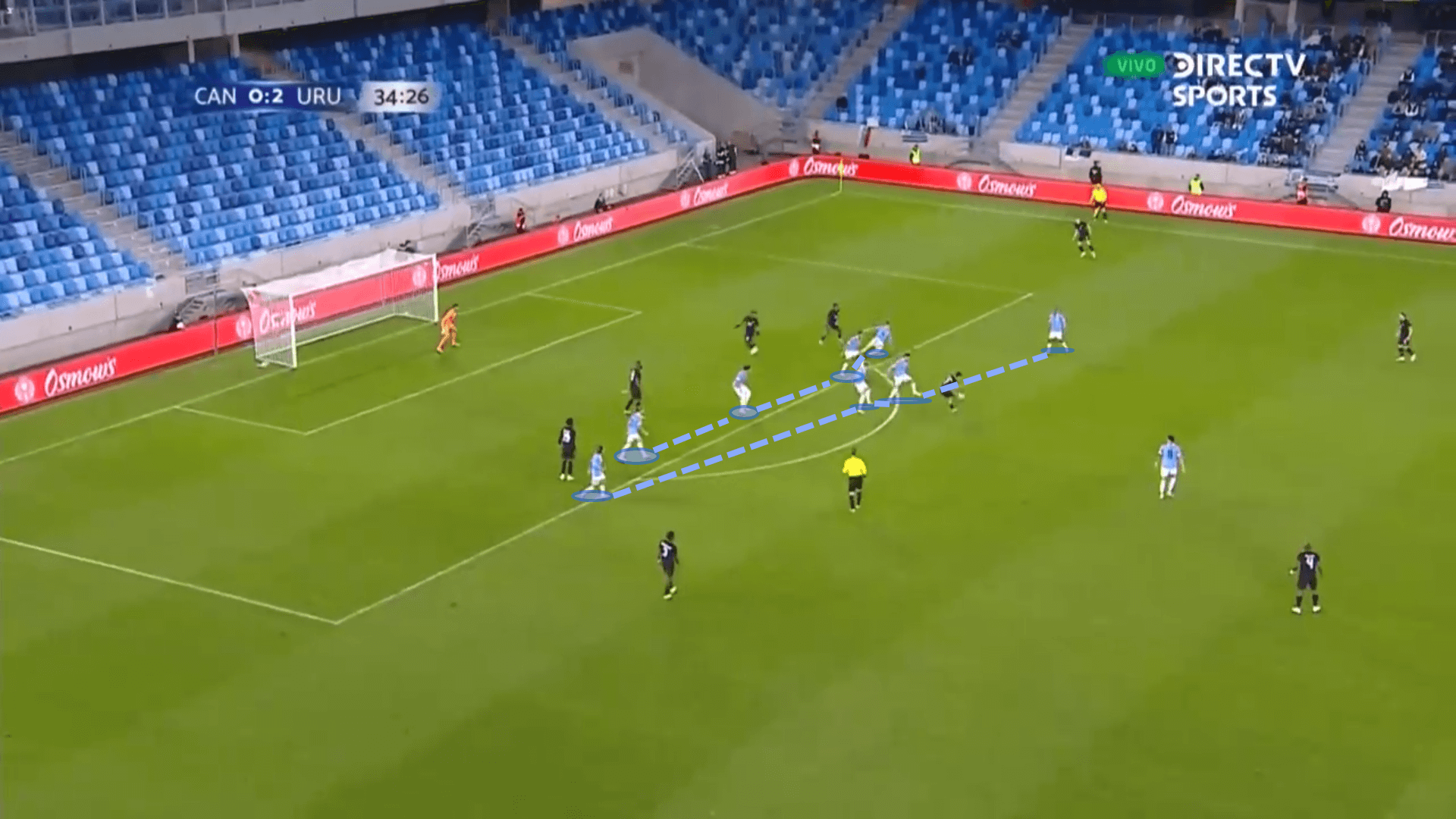
The Uruguayan defence play extremely narrow and encourages their opponents to play the ball out wide. This leads to the opponents often having time on the ball in the wide channels. The risk that this carries is that if some quality attack is displayed then they will be broken down.
Transitions
Upon regaining the ball, Uruguay look to play forward quickly with short intricate passing. Their style when breaking forwards is extremely entertaining as they break through the opposition so quickly, exploiting the space the opposition has left behind.
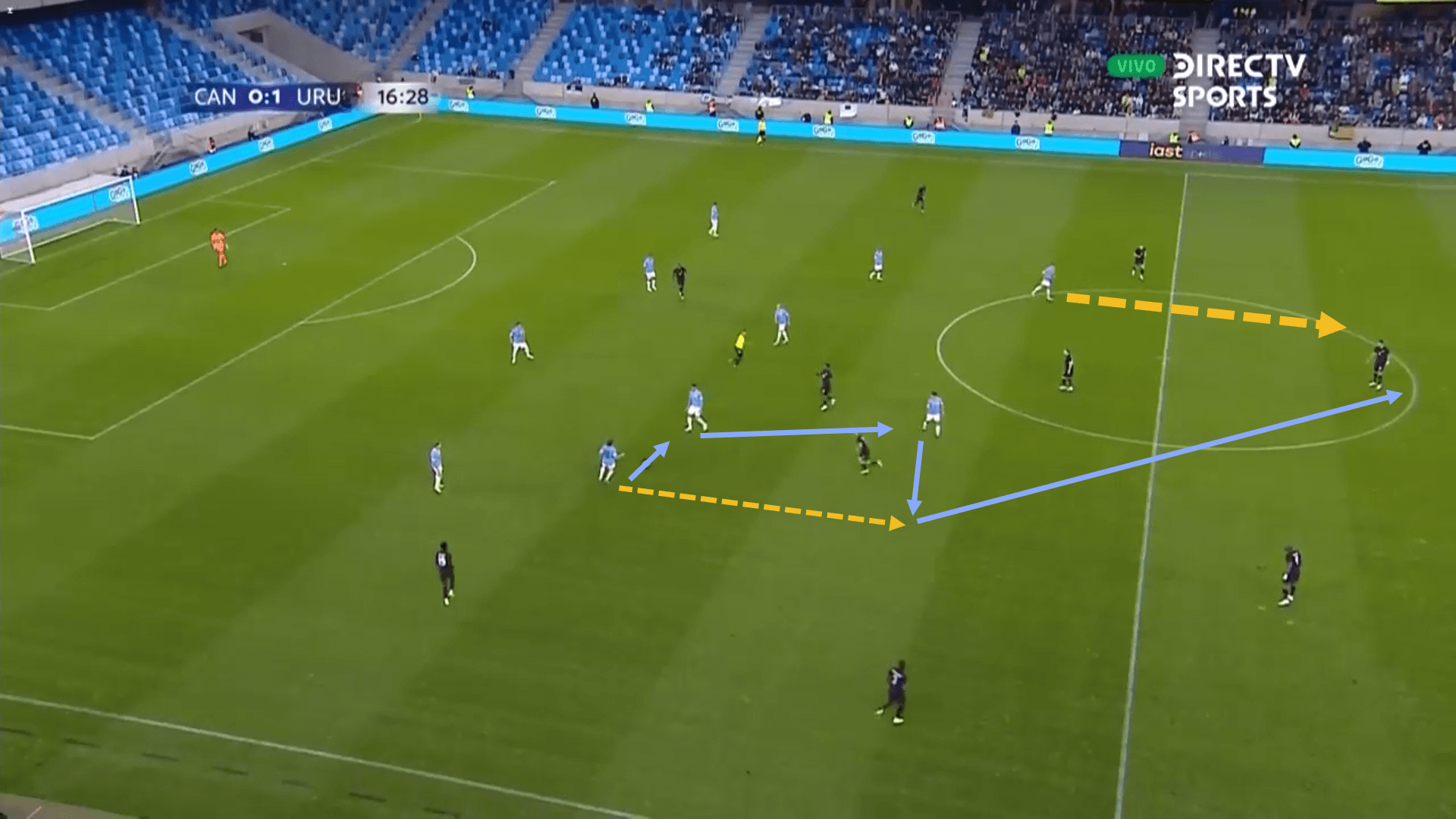
The example above involves three quick short passes before a longer one breaking the opposition’s back line and creating a 1v1 chance with the goalkeeper. This method is risky as the passes could be inaccurate or intercepted which would lead to an overturn of possession.
Defensively, Uruguay transition quickly and aggressively, often pressing their opponents and forcing them backwards. Doing this reduces the chance of being caught out by a counterattack as the opposition would be forced backwards.
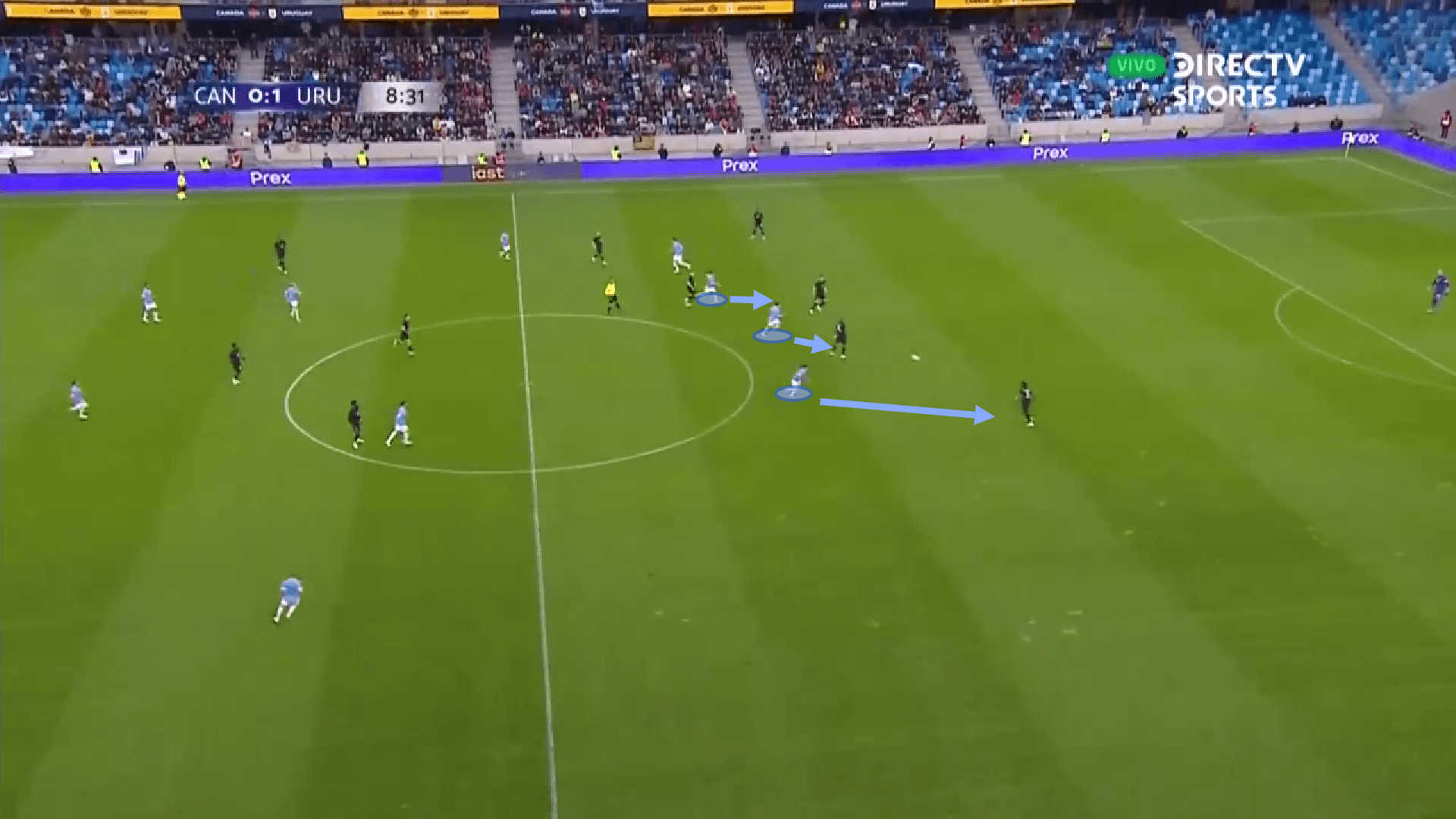
The image above shows how three players look to press the nearest player to them resulting in backwards passes from their opponents. This allows their teammates to regain shape and gain control of the situation. If a long ball is played over the press, then it could potentially become a threat.
Attackers
Uruguay are blessed at the top end of the pitch; experienced and top-class strikers Edinson Cavani and Luis Suárez will bring their experience to the international stage, while up-and-coming star Darwin Núñez will have all eyes on him after his £72m move to EPL giants Liverpool in the summer. The likes of Agustín Álvarez and Diego Rossi will also provide good cover and will gain valuable experience from being a part of the squad.
Midfielders
Federico Valverde, Rodrigo Bentancur, Lucas Torreira and Matías Vecino provide the central midfield with lots of depth and quality. Valverde and Bentancur are likely the first-choice midfield partnership but all four are more than capable of playing throughout the duration of the tournament.
Out wide, Nicolás de la Cruz, Facundo Pellistri and Agustín Canobbio will provide the main support for Alonso. The diversity of the wide players helps Uruguay play multiple different systems depending on where the opponents are.
Defenders
The defensive unit of Uraguay is vastly experienced with Fernando Muslera in the goal and the partnership of Diego Godín and José María Giménez in front. These three players bring experience and solid defensive ability that will help to ensure Uruguay succeed.
Furthermore, the full-back region is one of the areas that is expected to change. The left-back spot could be taken by either Matías Viña or Mathías Oliviera. On the right, Damián Suárez could be challenged by Guillermo Varela. Both options provide good cover and the full-back area is strong in the squad.
Key player
The heartbeat of Uruguay’s team is midfield general Federico Valverde. The midfielder is a regular for Real Madrid and is expected to be the main man in Uruguay’s team.
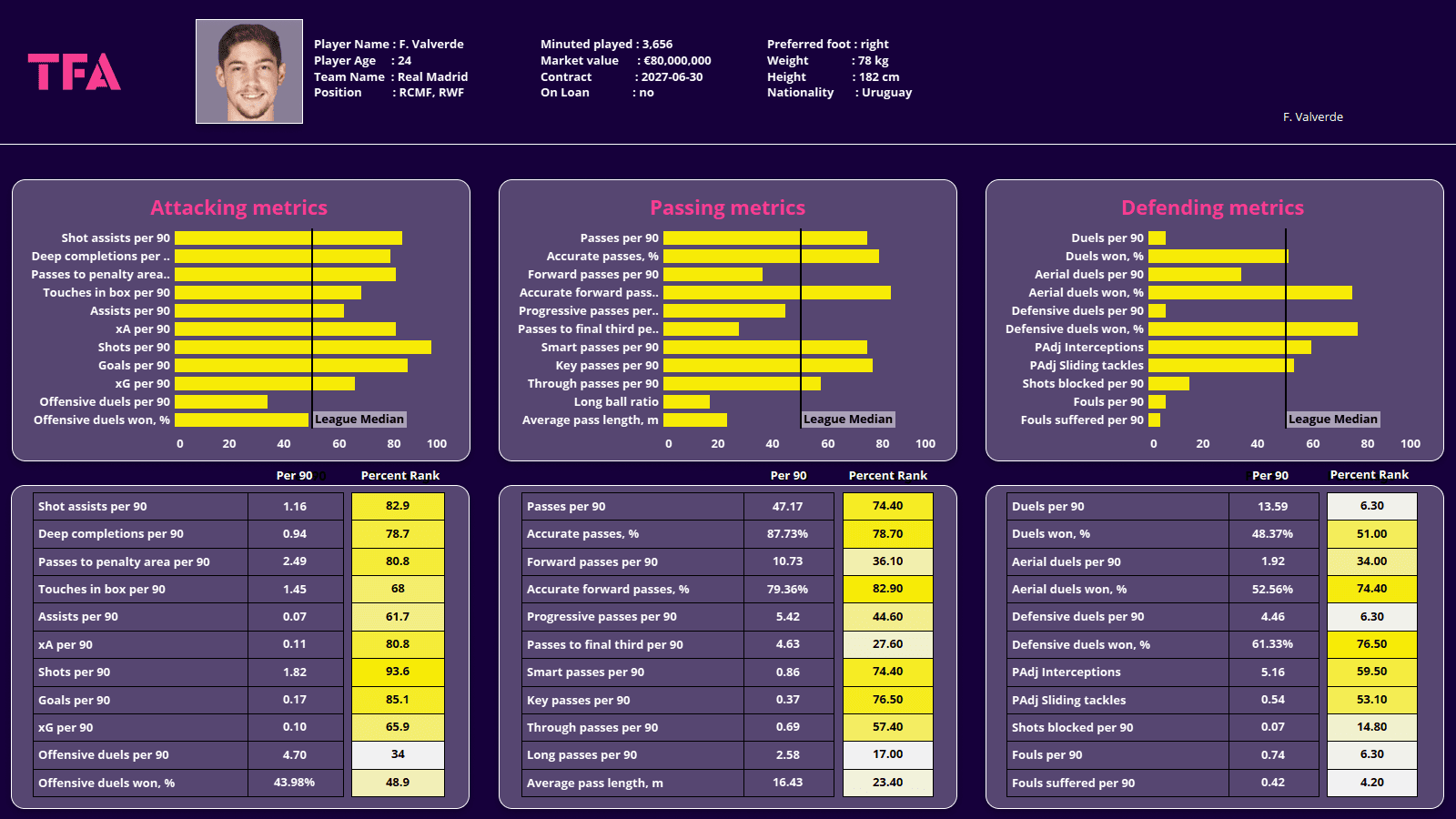
The attacking data above is exceptional. The fact that Valverde ranks above average for all categories bar two proves just how dangerous going forward he is. His shots per 90 rank, at 93.6, shows how attack-minded the midfielder is. He is involved in the large majority of attacks and poses a real attacking threat.
To continue, his passing data reads just as impressively. Firstly, his high rank for accurate forward passes shows how well he looks after the ball. Not only this, he doesn’t just keep the ball he is able to play it forwards. Not only this, his good placing for both smart passes per 90 and key passes per 90 shows just how effective he is in the attacking third. His progressive play and chance creation and help Uruguay to break opponents down.
Finally, the defensive data is an area of not as much strength as his others. Valverde ranks above average in just five of the categories in the defensive section. His importance to the team is too important to penalise him. His high rankings for aerial duels won and defensive duels won provides positive backing for the Uruguay midfield. Being paired with a midfield partner will provide that extra defensive steal.
Tournament prediction
Uruguay can be hopeful ahead of the World Cup. A good run of form in their recent fixtures bodes well for their chances. They have a good core of experience in the squad that will give them a good base to build on.
Uruguay should be looking for a good run in the tournament with a quarter-final expected. Their group of players will need to be managed due to the vast number of experienced players. If the minutes are managed well then there is no reason why Uruguay can’t progress to the quarter-final at the minimum.

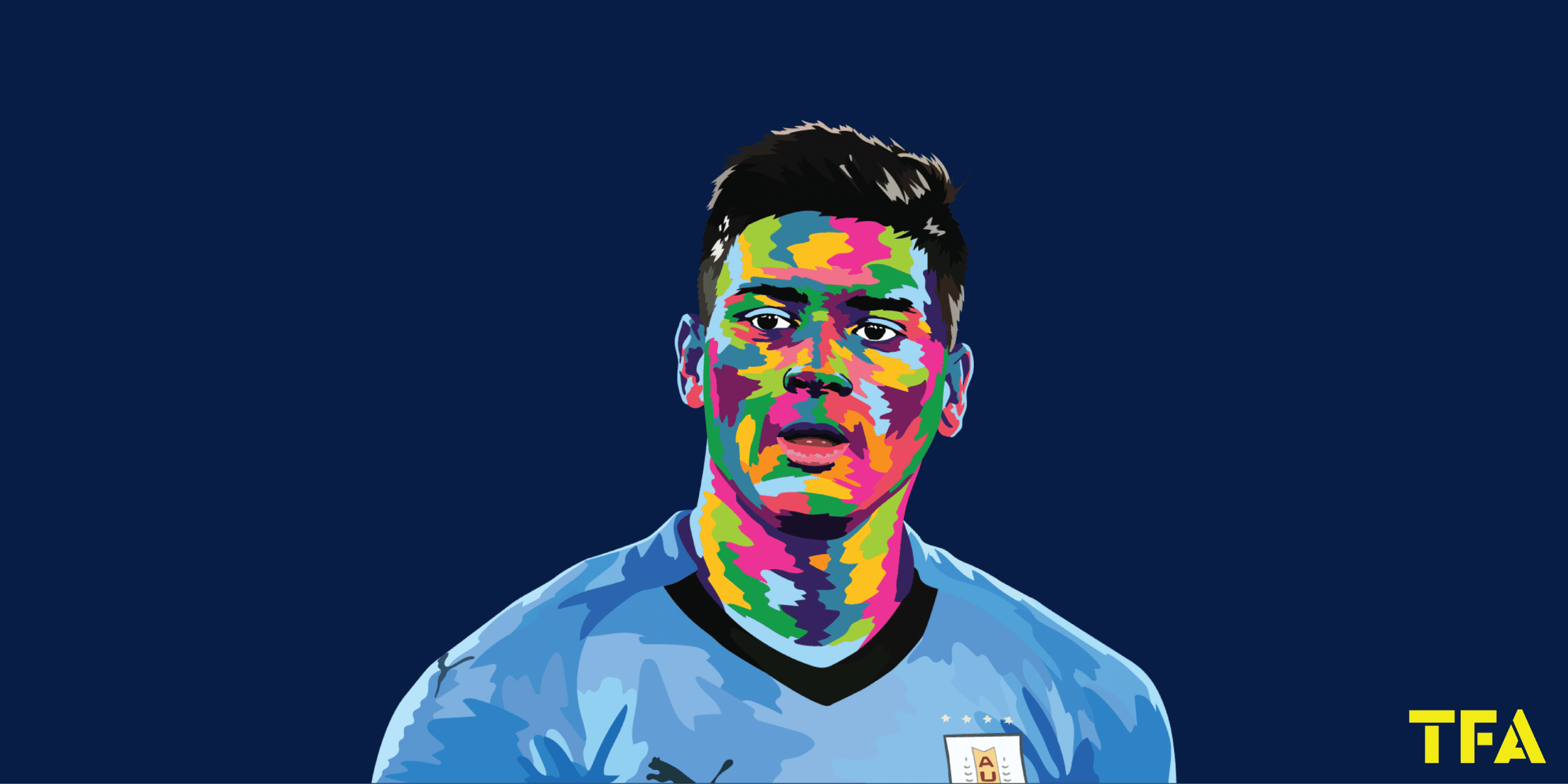



Comments